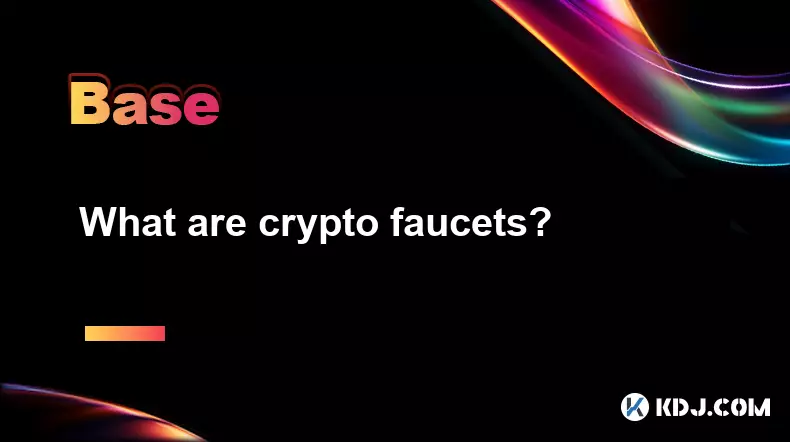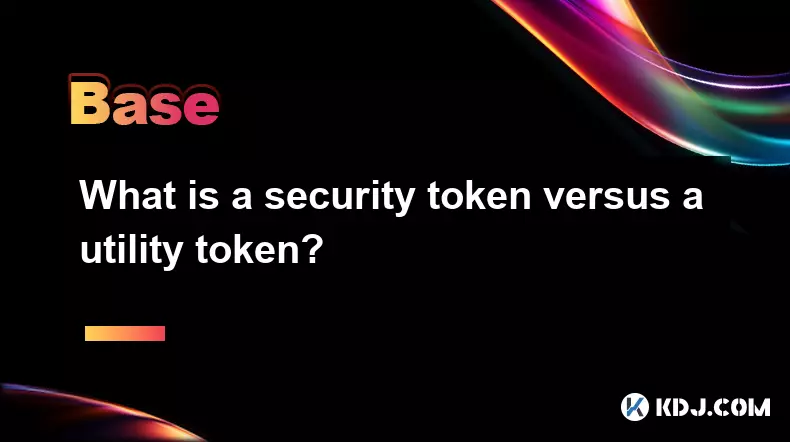-
 Bitcoin
Bitcoin $107300
-1.32% -
 Ethereum
Ethereum $4380
-1.98% -
 Tether USDt
Tether USDt $1.000
0.00% -
 XRP
XRP $2.727
-4.20% -
 BNB
BNB $850.6
-1.11% -
 Solana
Solana $197.2
-3.38% -
 USDC
USDC $0.9998
-0.01% -
 TRON
TRON $0.3374
-1.15% -
 Dogecoin
Dogecoin $0.2092
-4.52% -
 Cardano
Cardano $0.8020
-3.81% -
 Chainlink
Chainlink $22.91
-4.02% -
 Hyperliquid
Hyperliquid $44.07
-1.48% -
 Ethena USDe
Ethena USDe $1.001
0.02% -
 Sui
Sui $3.156
-5.18% -
 Stellar
Stellar $0.3471
-4.28% -
 Bitcoin Cash
Bitcoin Cash $531.1
-3.27% -
 Avalanche
Avalanche $23.00
-3.78% -
 Cronos
Cronos $0.2746
-5.59% -
 Hedera
Hedera $0.2139
-5.65% -
 UNUS SED LEO
UNUS SED LEO $9.621
0.49% -
 Litecoin
Litecoin $107.6
-3.31% -
 Toncoin
Toncoin $3.105
-1.06% -
 Shiba Inu
Shiba Inu $0.00001196
-3.99% -
 Polkadot
Polkadot $3.665
-4.49% -
 Uniswap
Uniswap $9.367
-5.19% -
 Dai
Dai $0.9999
-0.01% -
 Bitget Token
Bitget Token $4.521
-0.91% -
 Monero
Monero $266.2
2.25% -
 Aave
Aave $309.4
-4.42% -
 Ethena
Ethena $0.6316
-7.02%
What does "FUD" mean in crypto?
FUD—fear, uncertainty, and doubt—spreads negativity in crypto to manipulate markets, but informed investors can combat it with research and reliable sources.
Aug 31, 2025 at 05:54 pm

Understanding FUD in the Cryptocurrency Space
1. FUD stands for Fear, Uncertainty, and Doubt. In the context of cryptocurrency, it refers to the spread of negative information—whether true, exaggerated, or entirely false—intended to undermine confidence in a particular digital asset or the market as a whole. This tactic is often used to manipulate prices or steer public perception.
2. FUD can originate from various sources, including mainstream media, financial analysts, regulators, or even competing projects within the crypto ecosystem. For example, a news outlet highlighting the environmental impact of Bitcoin mining might trigger concerns among environmentally conscious investors, leading to a sell-off.
3. The psychological impact of FUD is significant. When investors are bombarded with alarming headlines or rumors, emotional responses often override rational analysis. This can result in panic selling, which drives prices down regardless of the project’s fundamentals.
4. Some actors deliberately propagate FUD to benefit from market downturns. Short-sellers or entities with opposing interests may amplify minor issues or misinterpret technical details to create a sense of crisis. Recognizing the intent behind information is crucial in distinguishing legitimate concerns from manipulative narratives.
5. Communities around strong blockchain projects often act as counterbalances to FUD. Active developers, transparent communication, and engaged supporters help clarify misconceptions and reinforce trust during turbulent times. These communities serve as a defense mechanism against coordinated misinformation campaigns.
The Role of Social Media in Amplifying FUD
1. Social media platforms like Twitter, Reddit, and Telegram are primary vectors for the rapid spread of FUD. Due to the decentralized and permissionless nature of these platforms, anyone can publish claims without editorial oversight, making it easy for misleading content to go viral.
2. Influencers and high-profile figures in the crypto space hold substantial power to shape sentiment. A single tweet from a well-known individual questioning the security of a blockchain protocol can trigger widespread concern, even if the claim lacks evidence.
3. Bots and coordinated accounts are frequently used to inflate the visibility of FUD-laden posts, creating the illusion of broad consensus or crisis. This artificial amplification can pressure genuine users into reacting emotionally, further destabilizing market stability.
4. The speed at which information spreads online often outpaces fact-checking efforts. By the time corrections or clarifications are issued, the damage to investor confidence may already be done, resulting in measurable price declines.
5. Projects that maintain active social media engagement and provide timely, accurate updates are better equipped to mitigate the effects of FUD. Transparency and consistency in communication help build credibility that withstands external attacks.
FUD vs. Legitimate Criticism
1. Not all negative commentary in the crypto space qualifies as FUD. Constructive criticism based on technical analysis, audit results, or economic modeling plays a vital role in improving projects and protecting investors.
2. The key difference lies in intent and methodology: FUD relies on emotion and misinformation, while legitimate critique uses evidence and reasoned argument. For instance, pointing out a smart contract vulnerability after a security audit is responsible discourse, whereas claiming a project is a scam without proof is FUD.
3. Investors should assess the source of the information, the quality of the evidence presented, and whether the narrative allows for rebuttal or dialogue. One-sided attacks that discourage inquiry are often red flags for FUD.
4. Healthy skepticism is encouraged in the crypto industry, given its history of fraud and volatility. However, skepticism must be grounded in research rather than reactionary sentiment fueled by sensational headlines.
5. Projects that welcome scrutiny and engage with critics tend to build stronger, more resilient ecosystems. Openness to feedback demonstrates maturity and reduces the effectiveness of baseless FUD campaigns.
Common Questions About FUD in Crypto
What are some common examples of FUD in cryptocurrency?Claims that a blockchain network is “hacked” when it experiences normal protocol forks, assertions that a coin will be banned globally without regulatory evidence, or spreading rumors about team members leaving a project without confirmation are typical examples of FUD.
How can investors protect themselves from FUD?Investors should verify information through official channels, consult multiple reliable sources, and avoid making impulsive decisions based on social media trends. Following project documentation, audits, and developer updates helps maintain perspective during periods of market stress.
Can FUD ever be used positively?While the term is inherently negative, awareness of FUD enables better critical thinking. Recognizing manipulative tactics helps investors and communities strengthen their resilience and promote more informed discussions within the crypto space.
Disclaimer:info@kdj.com
The information provided is not trading advice. kdj.com does not assume any responsibility for any investments made based on the information provided in this article. Cryptocurrencies are highly volatile and it is highly recommended that you invest with caution after thorough research!
If you believe that the content used on this website infringes your copyright, please contact us immediately (info@kdj.com) and we will delete it promptly.
- Memecoins September 2025 Watchlist: What's Hot Now?
- 2025-08-31 23:25:15
- Eric Trump Predicts Bitcoin to $1 Million: Hype or Reality?
- 2025-08-31 23:25:15
- BlockDAG: Redefining Scalability and ROI Potential in 2025
- 2025-08-31 23:05:16
- Ozak AI, Altcoins, and 20x Potential: Navigating the Crypto Landscape
- 2025-09-01 00:05:12
- Bonk Price, Solana Meme Coin, and the Rise of Layer Brett: A New Era?
- 2025-08-31 21:25:12
- ETH Transactions Soar, BTC Whale Shifts Gears: Decoding August's Crypto Charts
- 2025-08-31 21:05:16
Related knowledge

What is the halving in Bitcoin?
Aug 30,2025 at 10:18pm
Understanding Bitcoin Halving1. The Bitcoin halving is an event coded into the blockchain’s protocol that reduces the reward miners receive for valida...

What is a testnet versus a mainnet?
Aug 30,2025 at 06:54pm
Understanding the Role of Testnets in Blockchain Development1. A testnet serves as a parallel blockchain environment designed specifically for develop...

What are some common crypto scams to avoid?
Sep 01,2025 at 06:18am
Crypto Scams Involving Fake Exchanges1. Fraudulent platforms often mimic legitimate exchanges by using similar names and logos to deceive users. These...

What are crypto faucets?
Aug 30,2025 at 08:10am
Understanding Crypto Faucets1. Crypto faucets are online platforms that distribute small amounts of cryptocurrency to users for completing simple task...

What are privacy coins?
Aug 30,2025 at 06:18am
Understanding Privacy Coins in the Cryptocurrency Ecosystem1. Privacy coins are a category of cryptocurrencies specifically designed to enhance transa...

What is a security token versus a utility token?
Aug 30,2025 at 03:00pm
Understanding Security Tokens1. Security tokens represent ownership in an external asset or enterprise, often resembling traditional financial instrum...

What is the halving in Bitcoin?
Aug 30,2025 at 10:18pm
Understanding Bitcoin Halving1. The Bitcoin halving is an event coded into the blockchain’s protocol that reduces the reward miners receive for valida...

What is a testnet versus a mainnet?
Aug 30,2025 at 06:54pm
Understanding the Role of Testnets in Blockchain Development1. A testnet serves as a parallel blockchain environment designed specifically for develop...

What are some common crypto scams to avoid?
Sep 01,2025 at 06:18am
Crypto Scams Involving Fake Exchanges1. Fraudulent platforms often mimic legitimate exchanges by using similar names and logos to deceive users. These...

What are crypto faucets?
Aug 30,2025 at 08:10am
Understanding Crypto Faucets1. Crypto faucets are online platforms that distribute small amounts of cryptocurrency to users for completing simple task...

What are privacy coins?
Aug 30,2025 at 06:18am
Understanding Privacy Coins in the Cryptocurrency Ecosystem1. Privacy coins are a category of cryptocurrencies specifically designed to enhance transa...

What is a security token versus a utility token?
Aug 30,2025 at 03:00pm
Understanding Security Tokens1. Security tokens represent ownership in an external asset or enterprise, often resembling traditional financial instrum...
See all articles

























































































